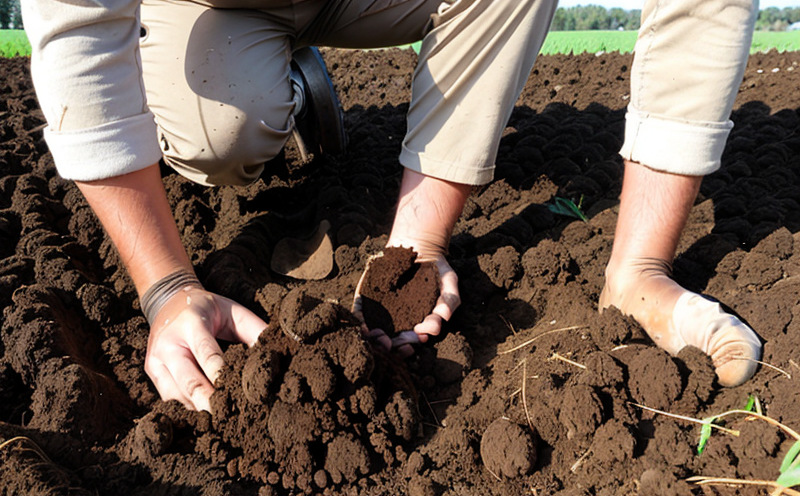Soil Microfauna Diversity Testing
In agriculture and forestry testing, soil microfauna play a crucial role in maintaining soil fertility and overall ecosystem health. Soil microfauna include a diverse range of organisms such as nematodes, mites, springtails, and protozoa. These tiny creatures contribute significantly to nutrient cycling, decomposition processes, and the physical structure of the soil. Understanding their diversity is essential for sustainable agricultural practices and forestry management.
Soil microfauna testing helps in assessing the health and productivity potential of soils by quantifying the presence and abundance of these organisms. This information is vital for optimizing crop yields, reducing chemical inputs, and enhancing environmental sustainability. The testing process involves collecting soil samples from various depths to capture a comprehensive view of the microfaunal community.
At Eurolab, our advanced laboratory methods ensure accurate and reliable identification and quantification of soil microfauna. We use state-of-the-art microscopy techniques and taxonomic expertise to categorize these organisms accurately. The testing process follows international standards such as ISO 14652-3:2009 for nematode enumeration in soil.
The results of our tests provide valuable insights into the natural processes occurring within the soil, which can inform decision-making regarding soil management practices. For instance, a high diversity index indicates robust ecosystem functions and resilience to environmental stress. Conversely, low diversity suggests potential issues that may require intervention such as increased fertilization or altered cultivation methods.
| Parameter | Description |
|---|---|
| Sample Collection Depth | Typically 0-15 cm and 15-30 cm layers are analyzed to capture different microfaunal communities. |
| Microscopy Magnification | 40x, 100x, and 200x magnifications for detailed identification of species. |
| Taxonomic Classification | Involves identifying nematodes, mites, springtails, and protozoa using key morphological characteristics. |
Why It Matters
The health of soil microfauna directly impacts the quality and productivity of agricultural and forestry lands. By maintaining a diverse population, farmers can ensure efficient nutrient cycling, enhanced water retention, and improved root growth for plants. Microfauna also play a critical role in decomposing organic matter into simpler compounds that are readily available to crops.
In sustainable agriculture and forestry practices, understanding soil microfauna diversity is essential for developing strategies that enhance natural processes without relying heavily on chemical inputs. This knowledge helps in designing integrated pest management systems where beneficial microfauna contribute to controlling harmful pests naturally.
The benefits extend beyond just the immediate agricultural or forestry context; healthy soils with diverse microfauna contribute positively to broader environmental health, including carbon sequestration and biodiversity support.
Industry Applications
- Agriculture: Enhance crop yield through optimized soil management practices.
- Forestry: Support reforestation efforts by improving soil conditions for tree establishment.
- R&D: Develop new fertilizers and treatments that promote microfaunal health.
Our testing service is particularly valuable in research and development (R&D) where understanding the impact of different agricultural practices on microfauna diversity can lead to innovations in sustainable farming techniques. For instance, certain pesticides or soil amendments may negatively affect specific species within the microfaunal community. Identifying these impacts early allows for adjustments that protect beneficial organisms.
In agriculture and forestry testing, soil microfauna diversity testing is not just a standalone service but an integral part of broader sustainability initiatives. By integrating this information into overall land management strategies, stakeholders can make informed decisions that lead to long-term benefits for both their operations and the environment.
Eurolab Advantages
At Eurolab, we pride ourselves on providing precise and reliable soil microfauna diversity testing services. Our experienced team uses cutting-edge technology to ensure accurate identification of all relevant species. This level of detail is crucial in understanding the full scope of the microfaunal community within a given sample.
We adhere strictly to international standards, ensuring that our results are comparable and valid across different regions. Our comprehensive approach ensures that no aspect of the microfauna diversity goes unnoticed or unreported.
Our commitment to quality extends beyond just the technical aspects; we also offer tailored advice based on our findings. This helps clients translate test results into actionable insights, whether for improving current practices or exploring new opportunities in sustainable agriculture and forestry.





